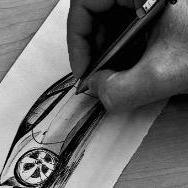Renault Clio RS16 Concept 2016
Quanto ti piace la Renault Clio RS16 Concept 2016?
13 voti
-
1. Quanto ti piace la Renault Clio RS16 Concept 2016?
-
Molto3
-
Abbastanza4
-
Poco5
-
Per niente1
-
- Si prega di accedere o registrarsi per votare a questo sondaggio.
-
Contenuti simili
-
Renault Symbioz 2024 1 2 3 4 5
Pubblicato da MotorPassion,
- renault
- renault symbioz
- (e 3 altri in più)
- 40 risposte
- 3092 visite
-
- 0 risposte
- 409 visite
-
- 57 risposte
- 15205 visite
-
-
-



























Messaggi Raccomandati:
Crea un account o accedi per lasciare un commento
Devi essere iscritto per commentare e visualizzare le sezioni protette!
Crea un account
Iscriviti nella nostra community. È facile!
Registra un nuovo accountAccedi
Sei già registrato? Accedi qui.
Accedi Ora